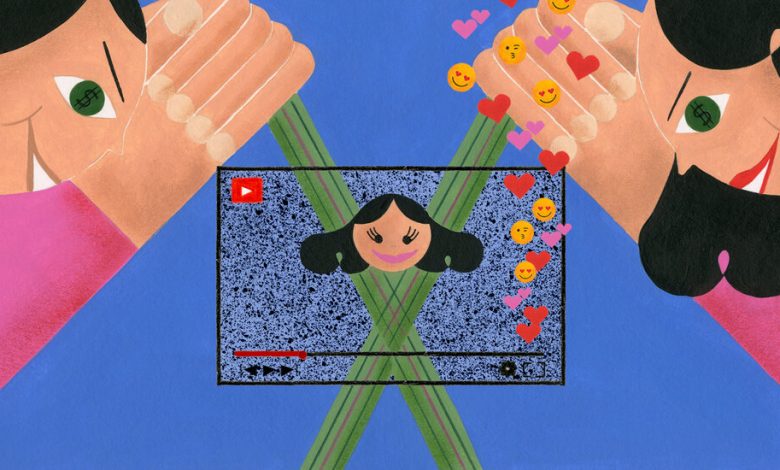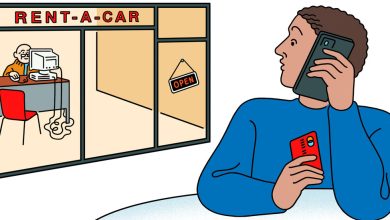Child Influencers Make Big Money. Who Gets It?

By now, the story of Britney Spears’s conservatorship and its eventual unraveling is well known: For years, Ms. Spears was trapped in a legal situation in which most of the money she earned went to her father, who controlled not only her finances, but things like her medication, her performance schedule and more.
Ms. Spears’s story spurred an examination of conservatorship laws, and that may have helped prompt recent assessments of the protections — or lack thereof — available to child influencers.
Like their adult counterparts (and often their parents), these influencers sing, dance, cook, act and recite lines; they work with major brands, like Walmart and Staples; and they earn money through sponsored posts on their social media accounts.
Yet in nearly all of the United States, these workers have no legal protections and no guarantees that they will ever see any of the money that they have earned.
If this has parallels with Ms. Spears’s conservatorship, its roots stretch back nearly a century.
In 1938, a 23-year-old named Jackie Coogan, who had starred in Charlie Chaplin’s “The Kid” as a toddler, learned that his mother and his stepfather had spent the millions of dollars he had earned as a child star.
He sued and won, and in response, California passed a bill in 1939, commonly referred to as the Coogan Law, to protect children in similar roles. Today, a revised version of the law requires that 15 percent of a child entertainer’s earnings go into a trust.
A few other states have their own versions of California’s law, but barring one exception, these laws do not extend to children who are making their names on Instagram, TikTok, YouTube or any of the other major social media platforms.
“They’re working,” Karen North, a professor of digital social media at the University of Southern California Annenberg School for Communication and Journalism, said of child influencers. “They’re being told how to act and told what to say and do for their parents’ pay and profit, but there are no restrictions the way there would be for a movie or a TV show.”
Even if child influencers produce their own content and are not managed by their parents, they are at risk of being exploited by adults in their lives. On popular social media websites, children under 13 cannot run their own accounts; parents have to open and manage them. And in most states children cannot open a bank account independently until they are 17.
Now, politicians are starting to catch up, motivated in part by civic-minded teenagers who have watched as popular family vloggers like Machelle Hobson and Ruby Franke have been exposed for abusing and exploiting their children, mostly behind the scenes, but sometimes on camera.
In August, Illinois passed a law, the first of its kind in the United States, requiring adults who use “the likeness, name or photograph” of a minor in paid online content to set aside a portion of the earnings in a trust. David Koehler, a state senator who introduced the bill, was inspired after receiving a letter from Shreya Nallamothu, a local high school student, urging him to consider establishing legal protections for child influencers.
How much parents should set aside is based on how much the child appears in the content. For example, if the child is in 100 percent of an influencer’s videos, at least half of the earnings must be set aside. The law, which will go into effect in July, does not require parents to report information about their child’s earnings to the state, but it does give child influencers the right to pursue legal action.
In Washington State, Chris McCarty, a college sophomore who uses the gender honorific Mx., has been working with local politicians since 2021 to design a law that will protect child social media stars. The current version of the bill, introduced in January, requires parents to set aside 15 percent of their revenue; it also includes a provision that an internet platform would have to take “all reasonable steps” to delete a video at the request of a child star who has come of age if the platform paid the parents for that content.
In February, Cam Barrett, a TikTok influencer who appeared in her mother’s Facebook posts regularly as a child, testified in support of the Washington bill.
“I’m terrified to share my name because a digital footprint I had no control over exists,” Ms. Barrett said. She recalled her mother sharing intimate details of her first period, of a car accident she was in, and of a serious illness she once had.
Sarah Adams, a blogger who criticizes child exploitation on social media, said that children were being “consumed as content publicly, sometimes on the daily, across various platforms.”
Influencing has become an aspirational path for many young people. A study by the Harris Poll, a market analytics group, and Lego found that children ages 8 to 12 are three times as interested in being a YouTuber as they are in being an astronaut.
The amount of money that influencers earn varies widely, but the most successful ones, like Anastasia Radzinskaya, the 9-year-old star of the YouTube channel Like Nastya, can make millions of dollars. In videos shared with 108 million subscribers, Anastasia spends time with her parents and friends, and demonstrates the risks of overeating sugar as well as the benefits of washing hands.
In the same stratosphere is Ryan Kaji, 12, who plays with toys, conducts science experiments and makes crafts on his YouTube channel, Ryan’s World. He also has a line of toys sold at Target and Walmart.
While those windfalls are rare, on Instagram, a user with a smaller following, referred to as a nano-influencer, can still pull in about $600 per post, while large accounts can earn $10,000 or $20,000.
“A lot of people see these channels and think it’s all fun and games, but there are estimates that some of these large accounts are the sole source of income for the family,” Mx. McCarty said. “It’s a tricky conflict of interest when your boss is also your parents.”
Until recently, many lawmakers like Mr. Koehler did not realize the scale of the industry and its potential for exploitation.
“Old folks like myself weren’t paying attention until someone who was 15 years old brought it to me,” Mr. Koehler said.
Another part of the problem is that laws need to balance the state’s right to protect vulnerable citizens with the parents’ right to raise their children as they see fit, said Stacey Steinberg, the director of the Center on Children and Families at Levin College of Law at the University of Florida.
“A lot of our labor laws treat employment by a parent differently,” Ms. Steinberg said. “If I have a farm and my child is working on my farm, they can work in much more dangerous conditions than they can work on your farm.” The question for courts, she said, is, Where does private family life end, and where does the state’s right to step in and protect children begin?
Some states could follow in Illinois’s footsteps.
In August, Torren Ecker, a state representative in Pennsylvania, announced that he would soon introduce legislation to regulate child influencers, and Jazz Lewis, a Maryland delegate, made similar promises to The Washington Post last month.
“The Illinois law is a great first step to ensure that they’re financially compensated,” Ms. Adams said. She wants states to create protections not only for the children’s financial interests, but also for their privacy and mental health. “I’ve always looked at privacy as a universal right,” she said. “It’s worrisome to think that a whole generation is growing up without access to it.”





